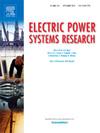Control performance analysis of an active power filter based on discrete predictors
IF 3.3
3区 工程技术
Q2 ENGINEERING, ELECTRICAL & ELECTRONIC
引用次数: 0
Abstract
The finite-control-set model predictive control (FCS-MPC) used in power electronics applications often relies on the Backward Euler method to discretize the predictors, which are intrinsic expressions of this control. This approach can be a limiting factor in achieving better performance. In this work, different techniques are presented for the discretization of predictors used in an FCS-MPC as the control system of a shunt active power filter (SAPF), which has the purpose of mitigating current distortions in the three-phase electrical grid. For each technique, different performance analyzes were used to control currents and DC-link voltage, such as response time, waveform quality, predictive cost function, and computational burden associated with simulation time. Therefore, the purpose of this work is to compare the performance of the techniques presented. To this end, four techniques are described, namely, Backward Euler, Trapezoidal, Centered Form, and Progressive Double Step (PDS). A description of the model is presented, based on the discretization techniques of the dynamic portion to obtain the predictors used in the control. In all cases, two prediction horizons were chosen, which proved to be suitable for mitigating distorted currents in the electrical grid and controlling DC-link voltage. The Simulink platform is used to extract online simulation results for the complete system, which includes the power grid, SAPF, nonlinear load, and control. The validation of the proposal is carried out using the results from a real-time simulator system OPAL-RT OP5700.
求助全文
约1分钟内获得全文
求助全文
来源期刊

Electric Power Systems Research
工程技术-工程:电子与电气
CiteScore
7.50
自引率
17.90%
发文量
963
审稿时长
3.8 months
期刊介绍:
Electric Power Systems Research is an international medium for the publication of original papers concerned with the generation, transmission, distribution and utilization of electrical energy. The journal aims at presenting important results of work in this field, whether in the form of applied research, development of new procedures or components, orginal application of existing knowledge or new designapproaches. The scope of Electric Power Systems Research is broad, encompassing all aspects of electric power systems. The following list of topics is not intended to be exhaustive, but rather to indicate topics that fall within the journal purview.
• Generation techniques ranging from advances in conventional electromechanical methods, through nuclear power generation, to renewable energy generation.
• Transmission, spanning the broad area from UHV (ac and dc) to network operation and protection, line routing and design.
• Substation work: equipment design, protection and control systems.
• Distribution techniques, equipment development, and smart grids.
• The utilization area from energy efficiency to distributed load levelling techniques.
• Systems studies including control techniques, planning, optimization methods, stability, security assessment and insulation coordination.
 求助内容:
求助内容: 应助结果提醒方式:
应助结果提醒方式:


